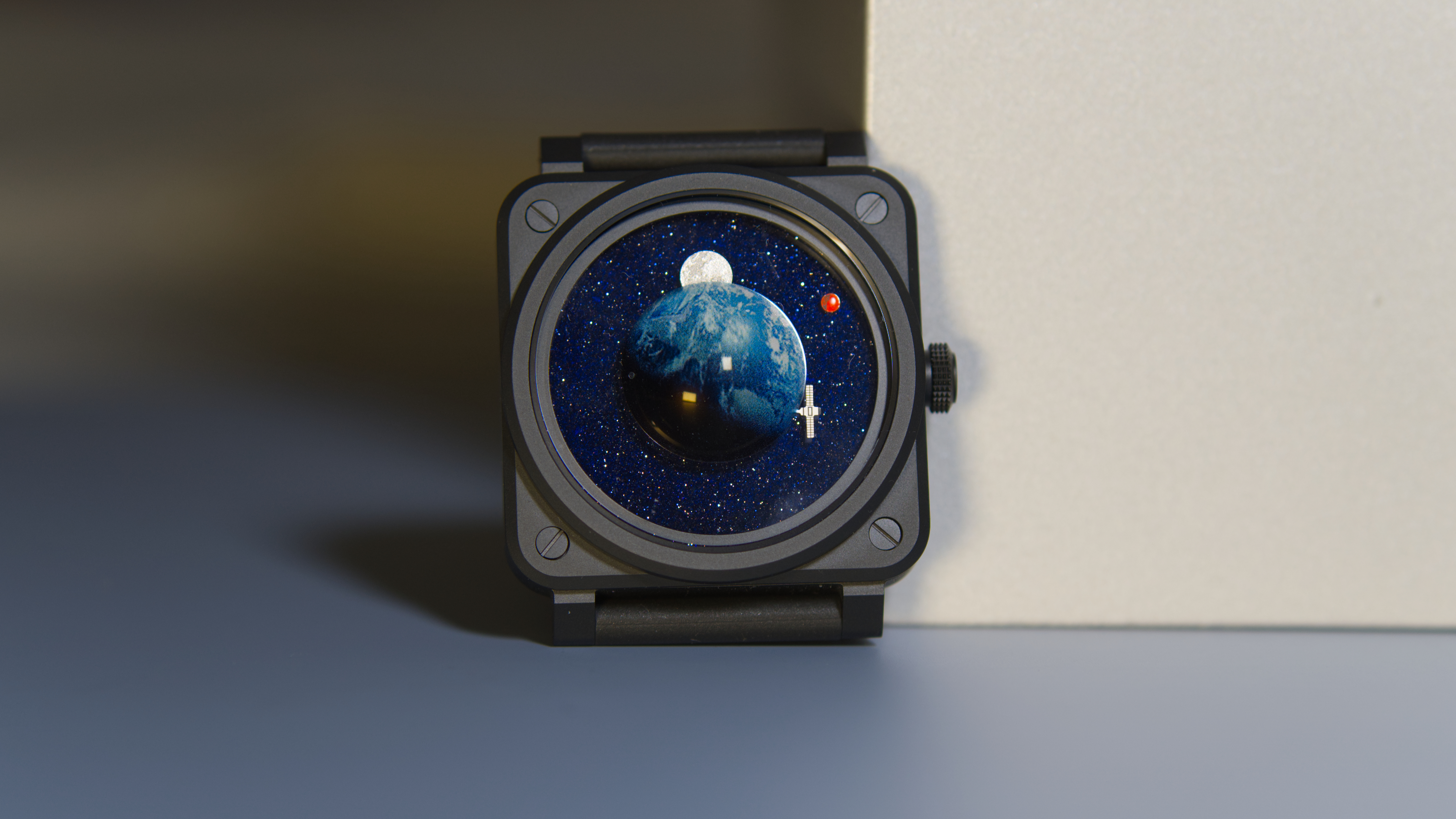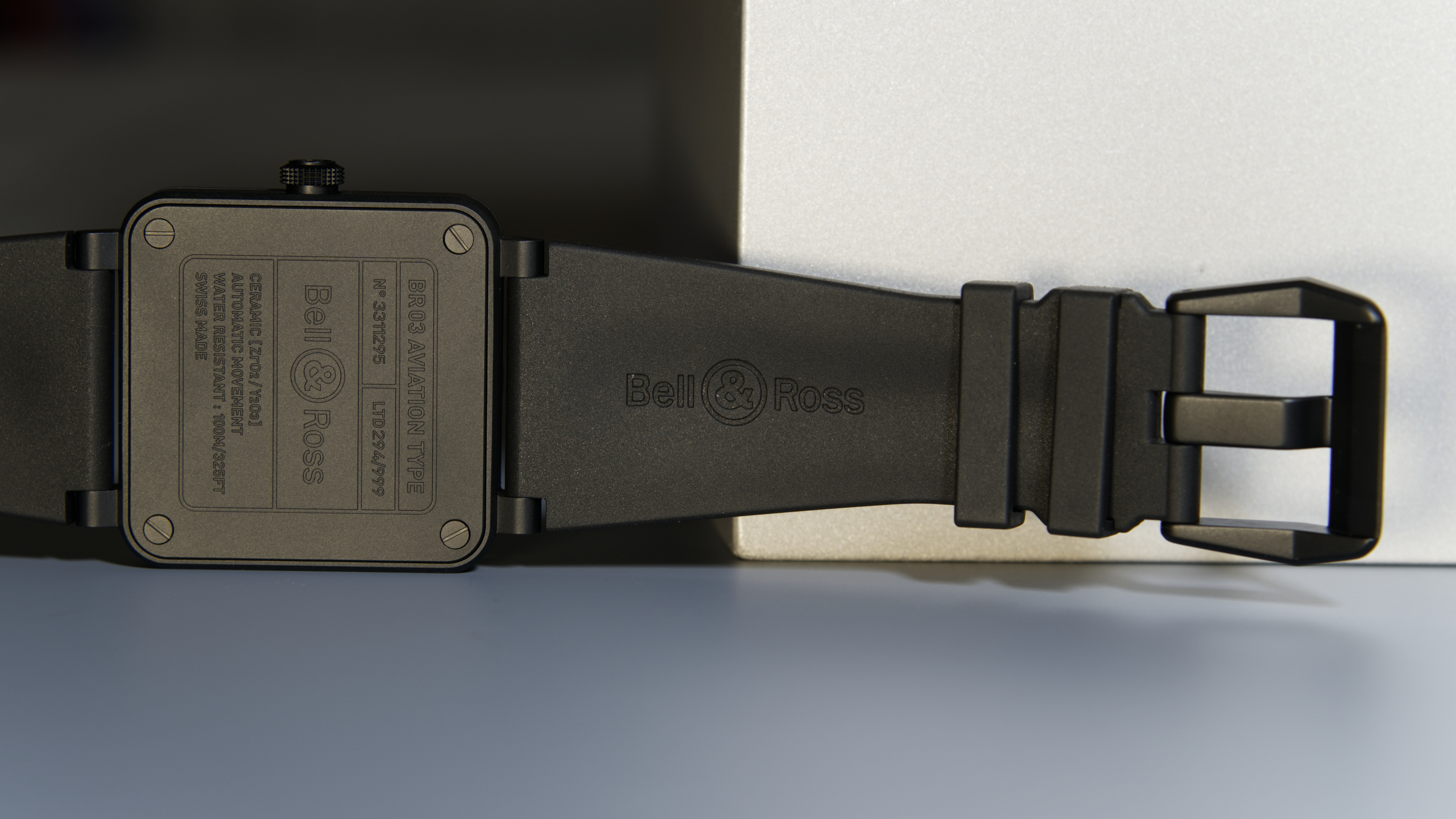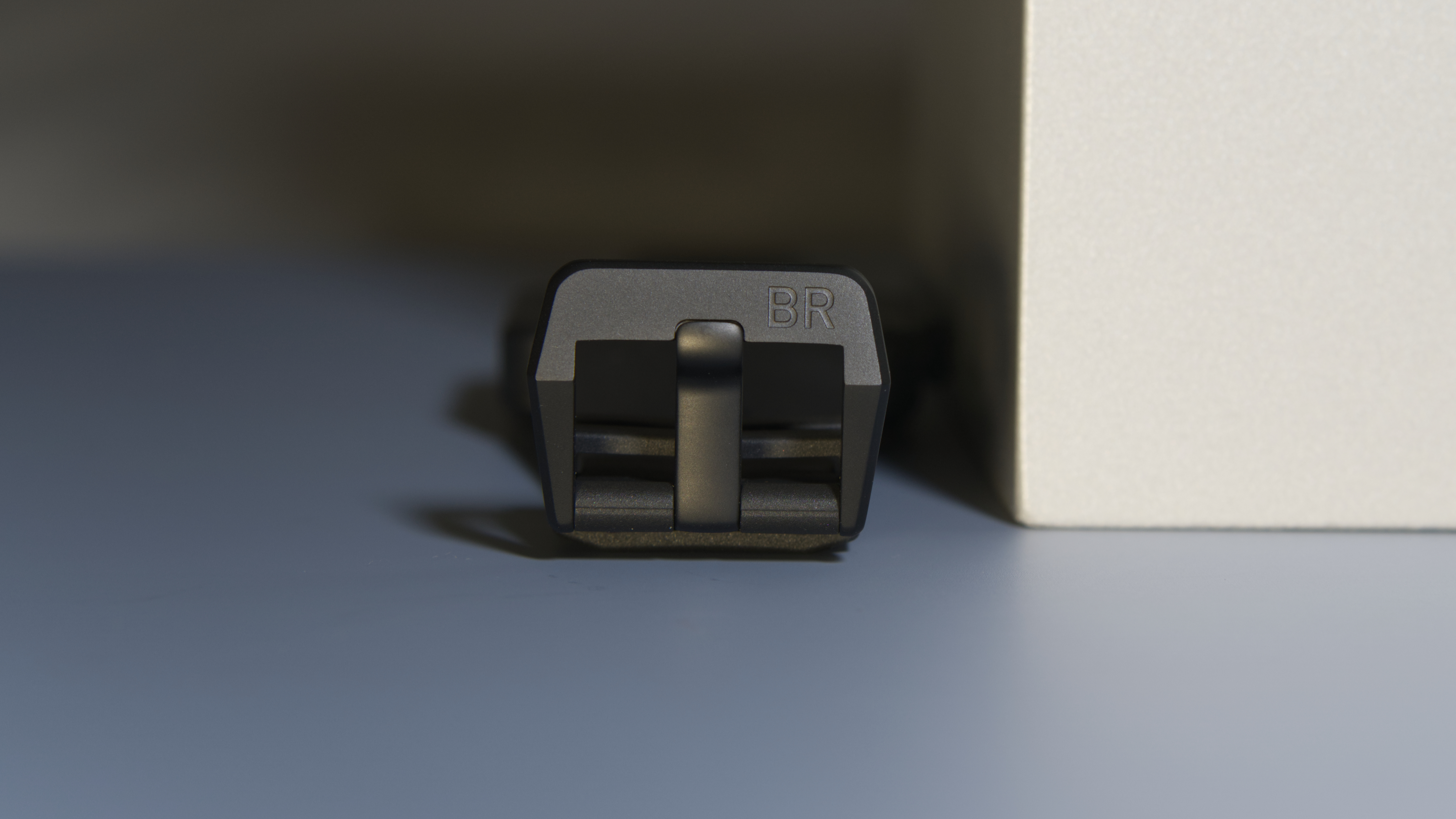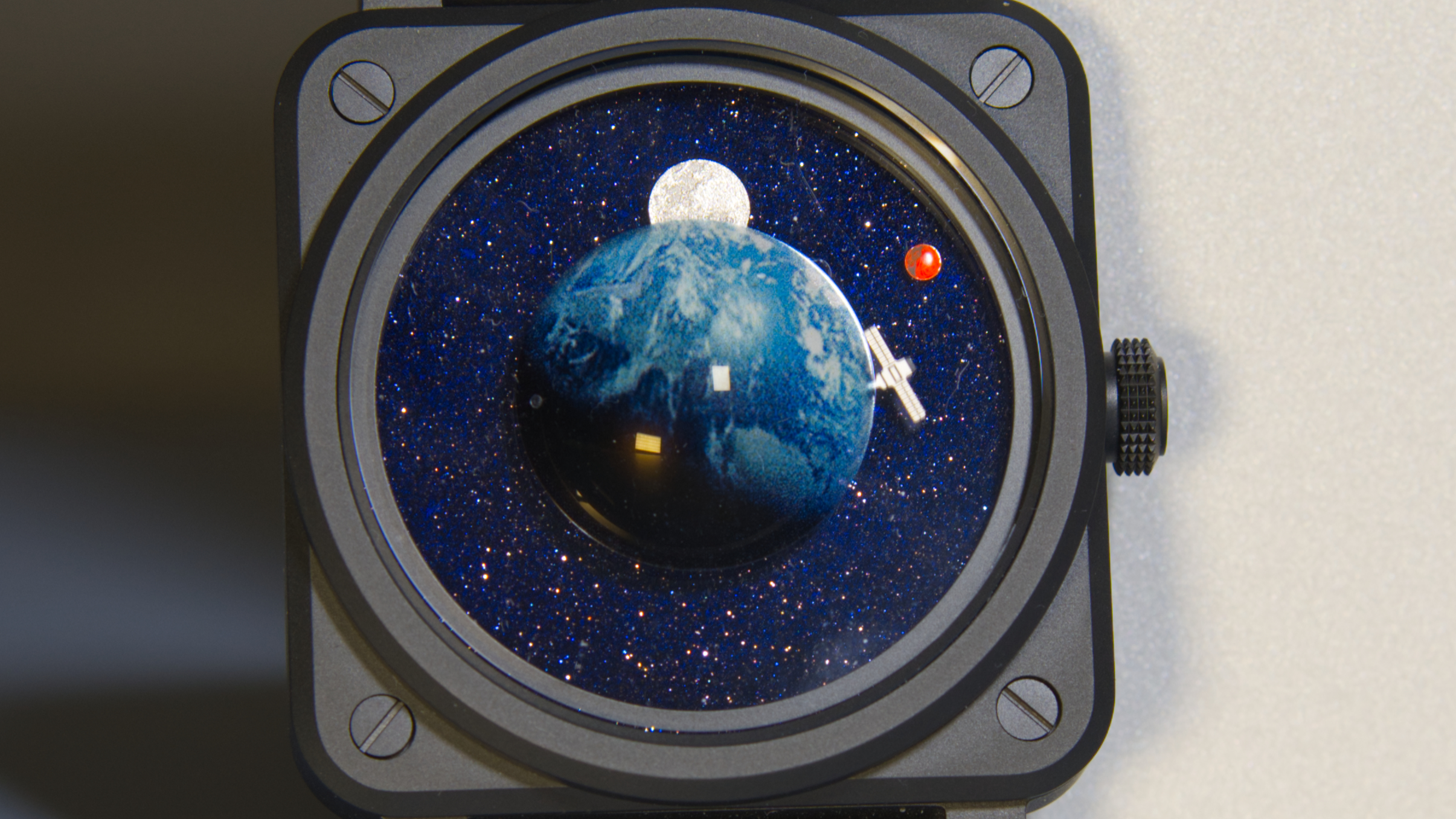
You could argue that many of the best watches on the market share quite a few similarities – particularly in the design department. Sure, you can nit-pick the details, but most of what we see are round cases made from steel, and that represents the imaginary picture of a watch which most people have.
Clearly, though, not the folks at Bell & Ross. Designed to look like old aviation dials, these watches are big hunks of square metal goodness. There's a certain brutalist charm to Bell & Ross which is impossible to ignore.
But what happens when you take that concept and soften it up a bit? That's exactly what happened with this – the Bell & Ross Astro. It's got a stunning dial and quirky hands, but can it retain the brand's signature charm? Let's find out.

Bell & Ross Astro: key specs
Let's kick off with that case. It's a 41mm black ceramic module, in the brand's characteristic square case shape. That shape does mean that it's not like a round 41mm case, though. For square cases, you need to consider the total area of the case, which means this wears more like a 45-46mm case in round terms.
The dial here is crafted from aventurine. For the unaware, that's a glass crafted in Murano – an island in Venice which is renowned for its glasswork. It's a deep blue colour, and packs in flecks of copper oxide, which reflect light in such a way that it looks like the night sky.
That's topped with a blue planet on the underside of the sapphire crystal, which is actually recessed into it. That gives a dramatic 3D effect, which is lovely to look at.
That's flanked by a trio of unusual hands. The hours are represented by a depiction of Mars; the minutes by a moon and the the seconds by a satellite.

What's the Bell & Ross Astro like to wear?
Let's get the obvious out of the way first – this certainly wears larger than most watches. I've got wrists which are on the smaller side, and it's a little too large, though if you've got even medium-sized arms you'll probably be okay.
The case is really lovely – I'm a massive fan of ceramic because it's lightweight, but still feels tough. That's especially true here, as it's a fair old hunk of ceramic.
Then there's the dial, which is just fantastic. I first got to enjoy an aventurine dial on the Christopher Ward C1 MoonPhase, and I've been vocal about its beauty ever since.
There's not quite as much on display here, though it's every bit as gorgeous. The planet in the centre is very nicely finished too, and the smaller Mars, moon and satellite depictions are also very detailed.
My biggest gripe here is the hands themselves. They just don't make any sense to me – the moon sits closer to the centre of the dial, yet represents the minutes hand, while Mars is the hour hand and is almost at the extreme edge. In an entire week with the watch, I just couldn't get used to it.

Is the Bell & Ross Astro worth the money?
Let's get down to brass tacks – you'll need over 4,000 of them. It costs £4,200 in the UK (approx. $5,250 / AU$8,300) which is not cheap, though quite reasonable for a ceramic piece like this. However, it is also limited to just 999 pieces, which does make that more reasonable.
Ultimately, the cost isn't going to be the barrier – it's the size. I've said it before, and I'll say it again – Bell & Ross need to look at making something a little smaller. The brand crafts some really lovely looking watches, but they're instantly off the table for a vast majority of potential users.







